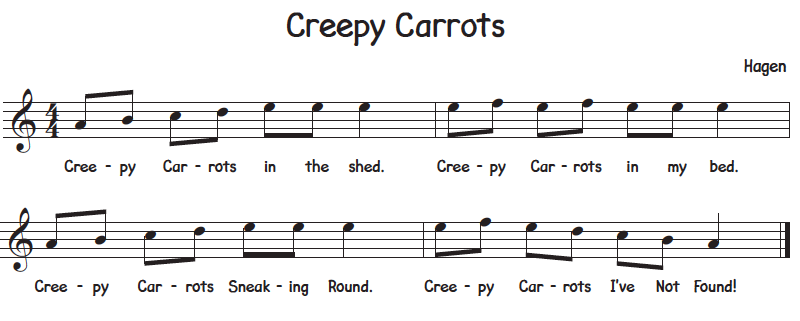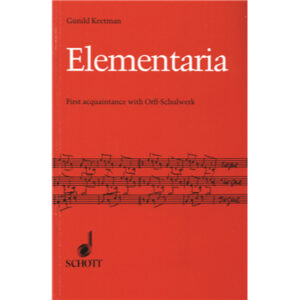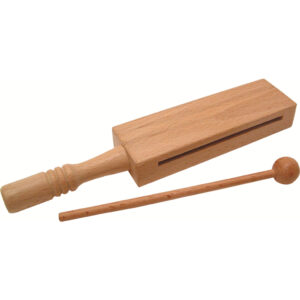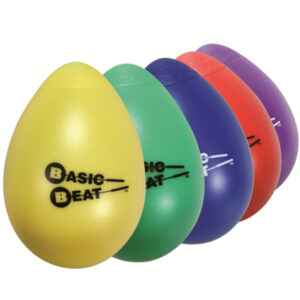SUMMARY
Compose in La hexatonic melody with creepy vegetables after reading the book Creepy Carrots by Aaron Reynolds.
by Kate Hagen

Suggested Grades: K-2
National Core Arts Standards
#1 – Generate and conceptualize artistic ideas and work.
Objectives
Materials
Carl Orff and his associate, Gunild Keetman, developed the Orff-Schulwerk approach to teaching music in Germany during the 1920s. It is an active music-making approach in which children learn musical behavior by creating, listening, analyzing, and performing through speech, singing, movement, body percussion, and instruments. The Orff approach teaches musical skills and concepts using a four-stage learning process: imitation, exploration, literacy, and improvisation. This lesson is an example of how to utilize all Orff process steps through many of the Orff media with older students.
Students will compose in La hexatonic melody with creepy vegetables after reading the book Creepy Carrots by Aaron Reynolds in this fall Orff composition improvisation lesson plan.

Keetman’s “Rhythmic Building Bricks” – Elementaria
Gunild Keetman’s “Rhythmic Building Bricks” use the most basic rhythms. Each block contains of two beats using only quarter notes, eighth notes, and quarter rest. Join these bricks together to make longer phrases. Forming longer phrases gives students and teachers the ability to form longer phrases for improvisation, body percussion, ostinato patterns, and composition.


The creepy vegetable cards and PowerPoint for this lesson are available for purchase for $5.00. Please consider helping me fund my Educlips Clipart addiction on Teacher Pay Teachers so that I can continue to provide quality graphics to accompany your teaching.

$10.00Add to cart
Elemental music is pattern-based music built on natural speech and body rhythms, familiar melodic patterns,
and simple forms that can be learned, created, understood, and performed without extensive technical or theoretical musical training.
– Definition by Nick Wild
Elemental Forms – Each letter is replaced with a creepy vegetable
Make your own Creepy Carrot Cake, the cover image @thesweetandsourbaker.
Lesson Sketch: Creepy Carrots – Music ConstructED
Creepy Carrots Read by Aaron Reynolds: https://www.youtube.com/watch?v=tWdPJLvaKYU
Creepy Carrots – Scholastic Video: https://www.youtube.com/watch?v=Lbt2FDyLDKM
Keetman, G. (1974). Elementaria: First acquaintance with Orff-Schulwek (1175895883 881146786 M. Murray, Trans.). London, England: Schott Music Ltd.
Reynolds, A., & Brown, P. (2014). Creepy carrots! Scholastic.
Wild, N. (n.d.). Defining Elemental Music. Retrieved February 02, 2021, from http://www.neaosa.org/defining-elemental-music.html.





